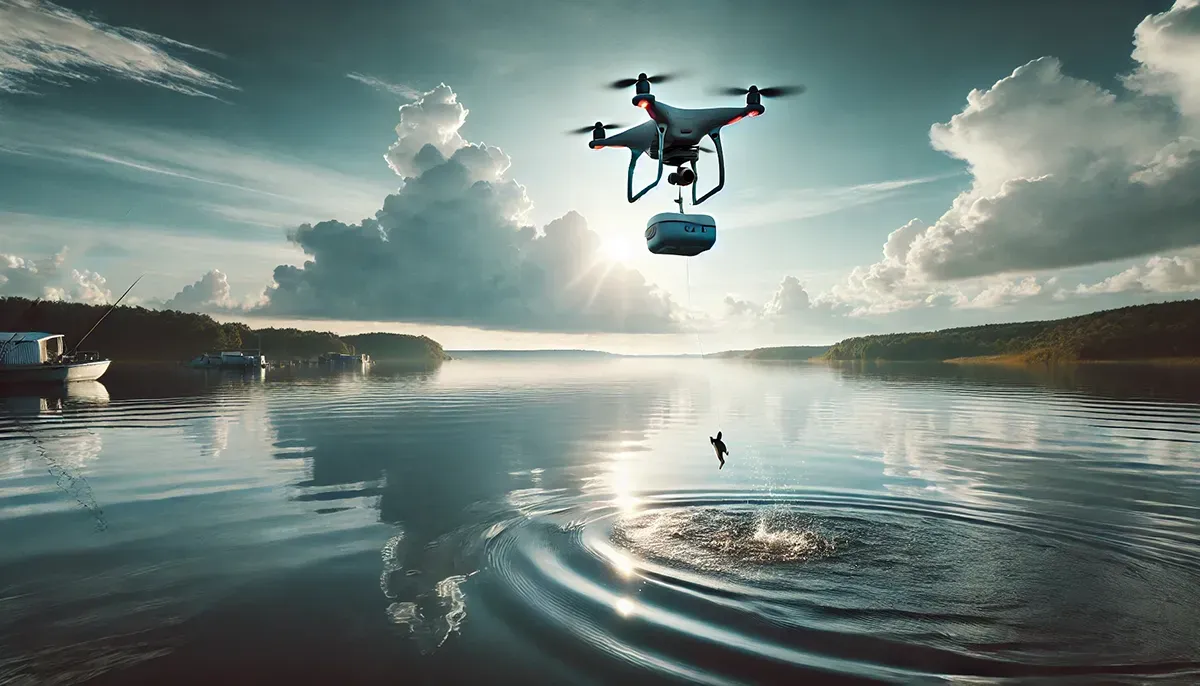G’day, fellow anglers! Have you ever dreamt of casting your line way beyond the surf, right into the heart of the action? Well, with drone fishing, that dream is now a reality. Drone fishing in Australia has taken our beloved pastime to exhilarating new heights, combining the thrill of fishing with cutting-edge technology. Imagine using a drone to drop your bait right where the big ones are biting. It’s a game-changer, mates!
As seasoned anglers, we know the importance of precision and reach when casting. Drones give us the advantage of an extended casting range and the ability to place our bait with pinpoint accuracy. Whether you’re after that elusive game fish or just want to explore new fishing spots, drone fishing opens up a world of possibilities.
And speaking of possibilities, don’t forget to check out the top-notch fishing lines from ReelBoss. Our lines are perfect for the demands of drone fishing, offering strength and reliability you can count on. Head over to ReelBoss to gear up for your next drone fishing adventure.
Ready to dive deeper into the world of drone fishing? From essential gear to top fishing spots in Australia, we’ve got it all covered. So, grab a cold one and read on!
Why Use Drones for Fishing?
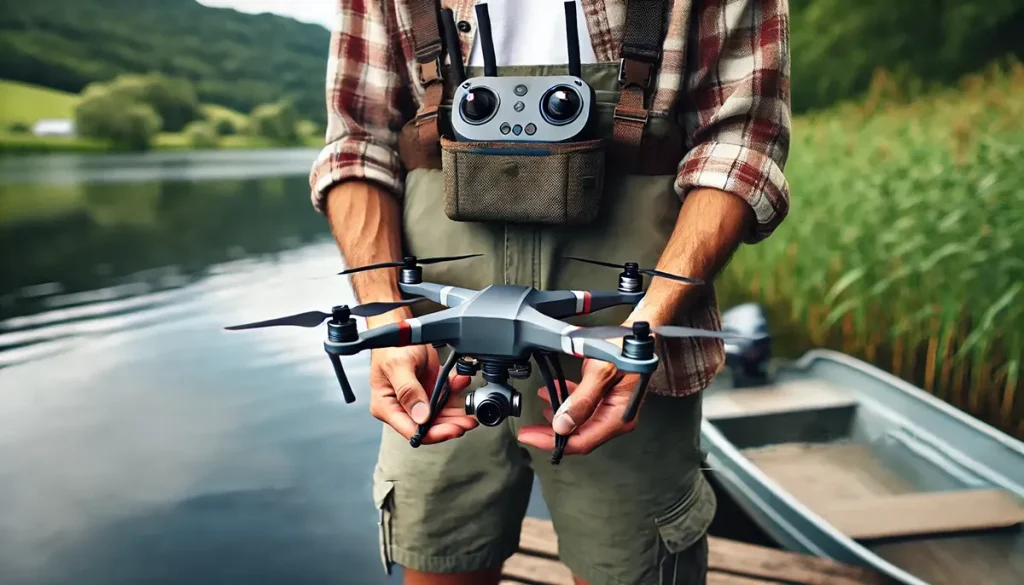
Ever wondered why so many anglers are turning to drones for fishing? It’s not just a trend; it’s a revolution in the way we fish. Here are some compelling reasons why you should consider adding a drone to your fishing gear.
First off, drones dramatically enhance your casting range and precision. Traditional casting limits where you can place your bait, but with a drone, you can drop your line right where the fish are biting, even if that’s hundreds of meters offshore. This means you’re not just hoping for a bite; you’re strategically placing your bait for the best chance of success.
Speaking of bait, drones come with efficient bait release mechanisms. These systems are designed to carry your bait to the desired location and release it smoothly, ensuring that your bait lands exactly where you want it. This is particularly useful when fishing in deep waters or targeting specific fish that are otherwise hard to reach.
Another big advantage is the ability to scout for fish. With a drone, you can fly over your fishing spot and get a bird’s eye view of the water. This can help you identify schools of fish or the perfect spot to drop your line.
If you’re looking to elevate your fishing game, drones are a fantastic investment. They offer precision, efficiency, and a whole new perspective on the sport. Ready to explore the essentials of choosing the right fishing drone? Read on!
Essential Features of Fishing Drones
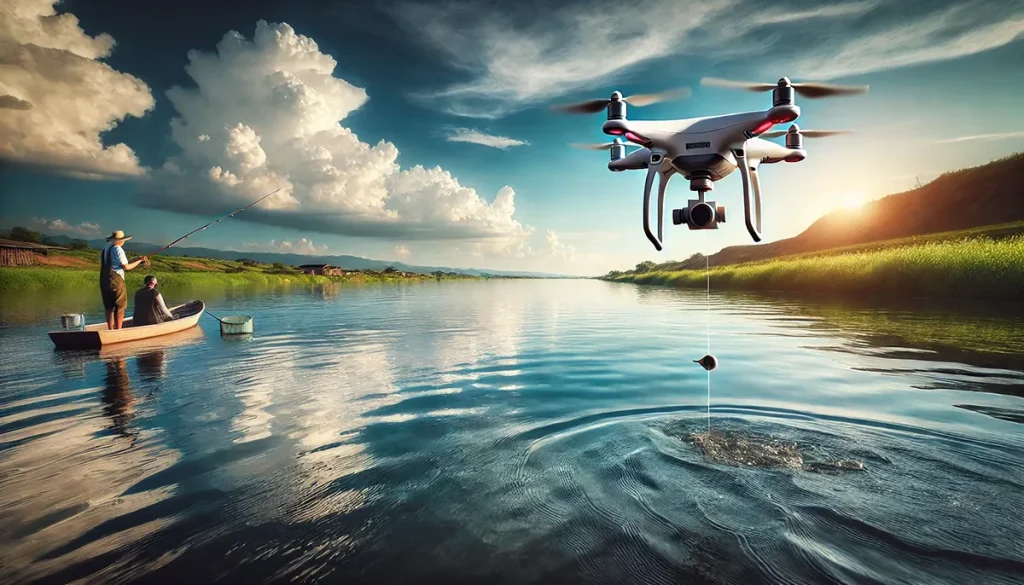
When it comes to selecting the best drones for fishing, there are several key features to consider to ensure you get the most out of your investment. Here are the top features you should look for.
Flight Time
Flight time is crucial for any fishing drone. The longer the drone can stay in the air, the more time you have to scout for fish, cast your line, and retrieve it. Look for drones that offer a substantial flight time, ideally over 20 minutes, to maximize your fishing sessions without frequent battery changes.
Wind Resistance
Fishing often involves dealing with windy conditions, especially in coastal areas. High wind resistance ensures that your drone remains stable and controllable even in gusty weather. This stability is essential for precise bait drops and for capturing clear video footage of your fishing spots.
Payload Capacity (e.g., 3.5 kg or 7.7 lbs)
Another important feature is the payload capacity. This determines how much weight your drone can carry, including your bait and any additional equipment like cameras. A good fishing drone should have a payload capacity of at least 3.5 kg (7.7 lbs), which allows for heavier baits and better versatility in different fishing scenarios.
Investing in a drone with these features will ensure you have a reliable and efficient tool for your fishing adventures. With the right drone, you can reach new fishing spots, improve your casting accuracy, and have a more enjoyable fishing experience. Ready to find the best fishing spots in Australia? Keep reading!
Drone Fishing Techniques
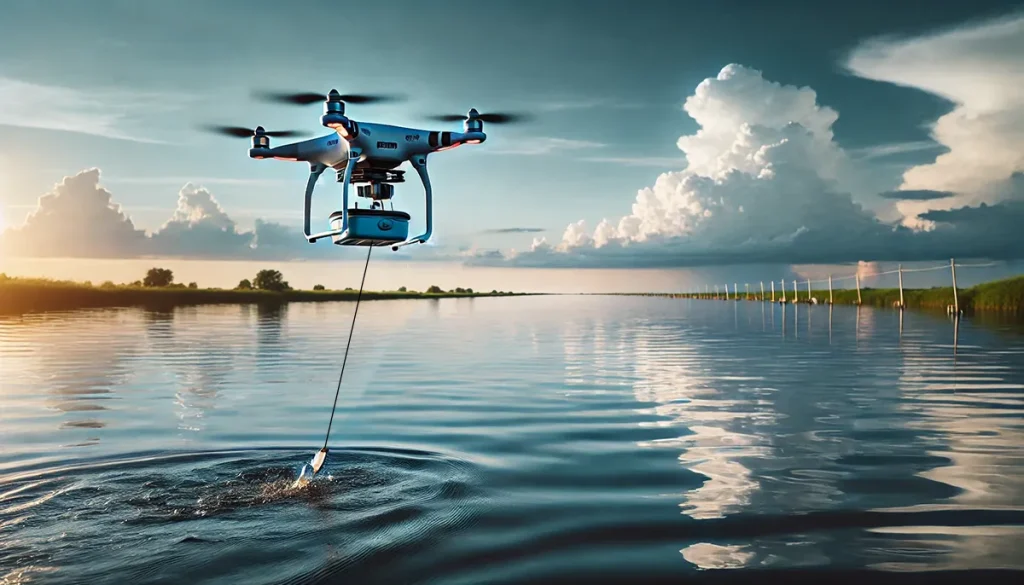
Mastering drone fishing involves more than just flying your drone over the water. It requires specific techniques to ensure you get the best results. Let’s dive into some key strategies to elevate your drone fishing game.
One of the primary techniques is dropping baits accurately. This is where drones truly shine, allowing you to place your bait precisely where you want it. Whether you’re targeting a specific spot where fish are schooling or placing bait near structures where fish like to hide, drones give you unparalleled accuracy.
Using live bait with drones adds another layer of excitement and effectiveness to your fishing. The trick is to handle the live bait carefully to keep it as fresh and active as possible. Drones equipped with specialized bait release mechanisms can carry and drop live bait without causing harm, making it an excellent choice for targeting larger predatory fish.
Managing heavy bait with high payload capacity drones is essential for serious anglers. Some fishing situations require heavier baits to attract bigger fish or to ensure the bait stays in place in strong currents. A drone with a high payload capacity, like 3.5 kg (7.7 lbs), can handle these demands with ease, allowing you to fish in a variety of conditions without worry.
By honing these techniques, you’ll not only increase your chances of a successful catch but also enhance your overall fishing experience. Ready to explore the top fishing spots in Australia for drone fishing? Read on!
Top Fishing Spots for Drone Fishing in Australia
Australia is a paradise for anglers, and drone fishing opens up even more exciting opportunities. Here are some of the best fishing spots to try out your drone fishing skills.
For coastal and land-based drone fishing, the Gold Coast is a top choice. Its long stretches of beach provide plenty of space to fly your drone and drop your bait into the surf, targeting species like snapper and flathead. The ability to place your bait beyond the breakers gives you access to fish that are typically out of reach.
Another prime location is Sydney Harbour. While it’s known for its iconic views, it also offers fantastic fishing. Use your drone to drop baits near underwater structures or in deeper channels where larger fish like kingfish and mulloway reside.
Heading south, Port Phillip Bay in Victoria is perfect for drone fishing. This spot is known for its diverse fish population, including whiting, snapper, and gummy sharks. The bay’s calm waters are ideal for accurate bait release and managing heavy bait.
If you’re after big game, Ningaloo Reef in Western Australia should be on your list. The reef is home to some of the most exciting game fish, and using a drone allows you to explore the outer edges of the reef safely from the shore.
These fishing spots provide varied environments where you can take full advantage of your drone’s capabilities. So, pack your gear, and get ready to discover the thrill of drone fishing in some of Australia’s most stunning locations.
Drone Fishing for Game Fishing
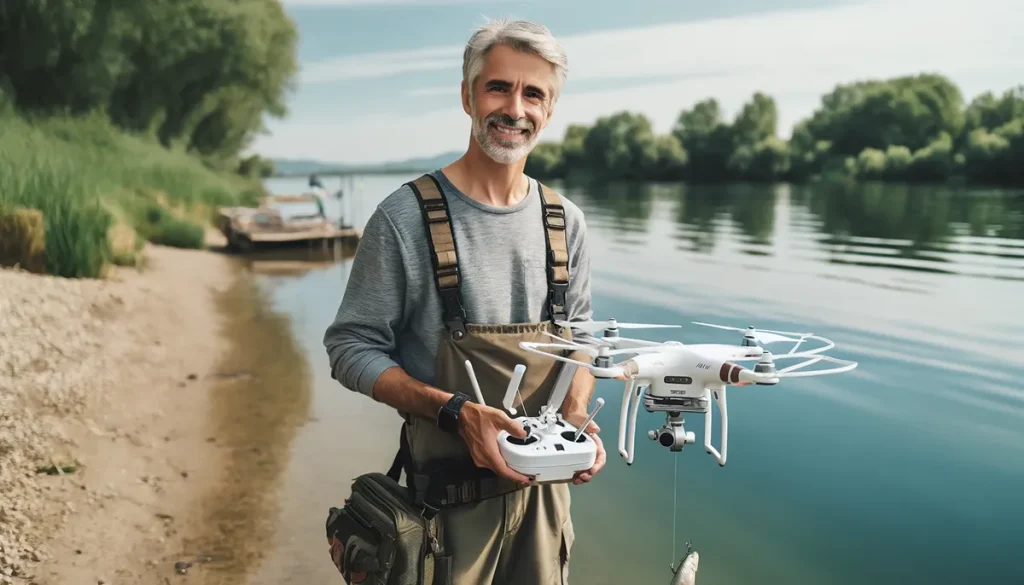
Drone fishing is revolutionizing game fishing, making it more thrilling and accessible for anglers seeking to target larger species. By integrating advanced technology, drones for fishing provide significant advantages that enhance the overall game fishing experience.
One of the main benefits is the ability to precisely place baits in locations that are otherwise difficult to reach. Drones for fishing can carry and drop baits in deep waters or near reefs where big game fish like tuna, marlin, and kingfish are known to dwell. This precision not only increases the chances of a successful catch but also allows anglers to explore new fishing territories with confidence.
Moreover, drones allow for real-time scouting. By flying over potential fishing spots, anglers can identify schools of fish or optimal locations before deploying their lines. This bird’s-eye view is invaluable in targeting larger species that require specific conditions or habitats.
Drone fishing also adds an element of safety to game fishing. Anglers can stay onshore or in their boats while their drones venture into deeper waters, reducing the risks associated with rough seas or hazardous fishing spots. This makes the sport more accessible to both seasoned anglers and newcomers.
In essence, drones are transforming game fishing by providing enhanced precision, safety, and the ability to target larger species effectively. Ready to see what the future holds for drone fishing in Australia? Read on!
The Future of Drone Fishing in Australia
As we wrap up our exploration of drone fishing, it’s clear that this innovative approach is reshaping the fishing landscape in Australia. The benefits and excitement of drone fishing are undeniable, offering anglers new ways to enhance their fishing experiences.
Drone fishing provides unparalleled precision, allowing for accurate bait release and the ability to reach distant or hard-to-access fishing spots. This means more successful catches and the opportunity to target a wider variety of fish species. The integration of technology, such as high-resolution cameras and GPS, further enhances the experience, giving anglers a comprehensive view of their fishing environment.
Looking ahead, the future of drone fishing in Australia is bright. With advancements in drone technology, we can expect even more features tailored specifically for fishing, such as improved flight time, greater wind resistance, and increased payload capacity. These innovations will continue to make drone fishing more efficient and enjoyable.
However, it’s essential to practice responsible and sustainable fishing. Using drones to fish should be done with respect to the environment and local regulations. By adopting eco-friendly practices and ensuring we don’t overfish, we can preserve Australia’s rich fishing heritage for future generations.
In conclusion, drone fishing is not just a fad; it’s a revolutionary tool that is here to stay. Embrace the excitement, explore new horizons, and always fish responsibly. Tight lines, and happy fishing!
